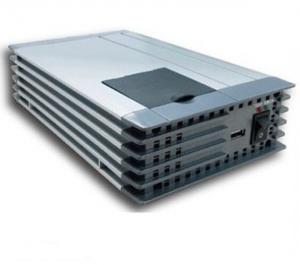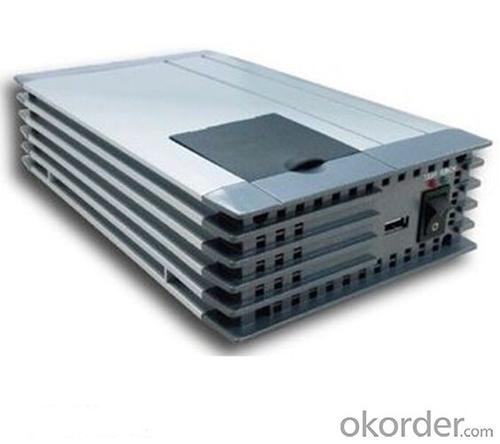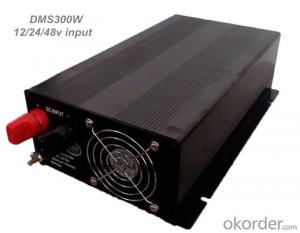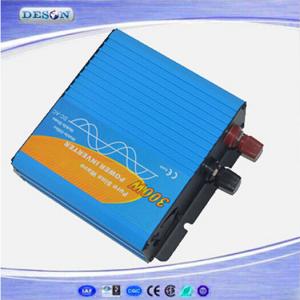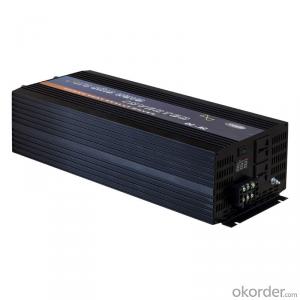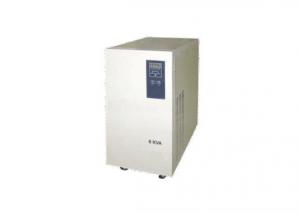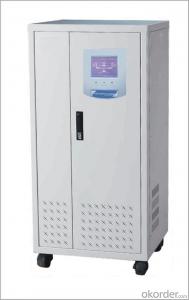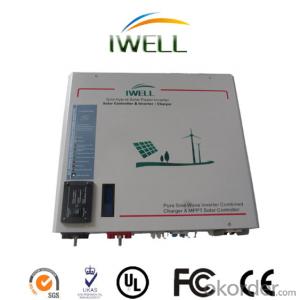300 Watt Pure Sine Wave Solar Inverter 350Watt
- Loading Port:
- China main port
- Payment Terms:
- TT or LC
- Min Order Qty:
- 150000 watt
- Supply Capability:
- 3000000 watt/month
OKorder Service Pledge
OKorder Financial Service
You Might Also Like
1. Structure of Pure Sine Wave Photovoltaic Inverter 350Watt
ParaWatt Series inverter is a leading product in the industry, which has high cost performance. LED indicating lights can work under -25°
C ambient temperature.
Advance circuit design and high standard choice of components maximized its adaptability to inductive and capacitive loads. ParaWatt series
inverter can be used in cars, yachts and solar systems.
The superior performance and reliable quality makes ParaWatt series inverter the best choice for your requirements.
2. Main Features of Pure Sine Wave Photovoltaic Inverter 350Watt
• High efficiency 88%~89%
• Input & output fully isolation design
• THD <3%
• High surge capable of starting motor load
• EMC, multi-protection
• Temperature controlled cooling fan
• Ultra-compact design, low weight
•Brackets can be detachable and mounted; suit for different environments
• Output connector is designed on the top of chassis, suit for all kinds of connection modes
• USB interface 5V/12V
3. Pure Sine Wave Photovoltaic Inverter 350Watt Images
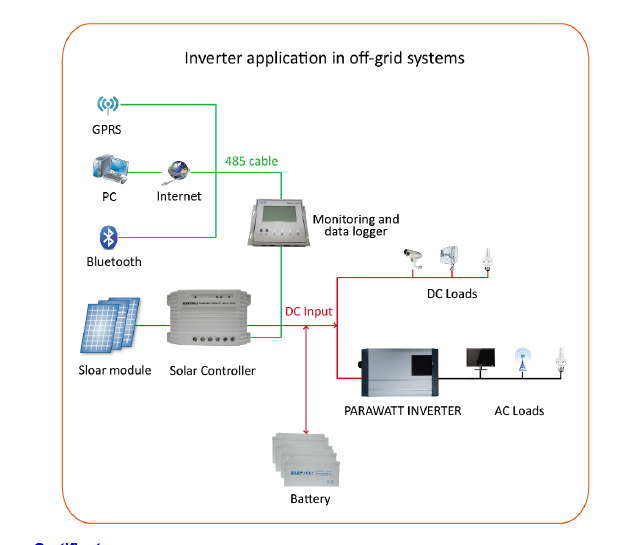
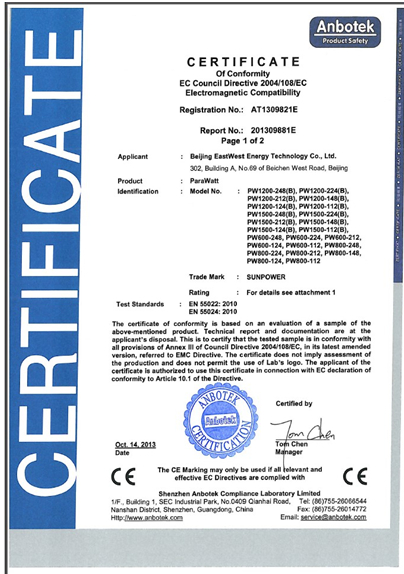
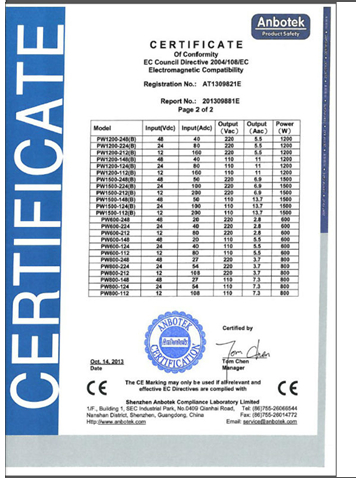
4. Pure Sine Wave Photovoltaic Inverter 350Watt Specification
窗体顶端 DC input voltage 窗体底端 | 12V | 24V |
Low voltage shut | 10.5±0.3VDC | 21.0±0.3VDC |
Low voltage resume | 12.0±0.3VDC | 24.0±0.3VDC |
High voltage shut | 15.0±0.5VDC | 30.0±0.5VDC |
High voltage resume | 14.5VDC | 29.0VDC |
Auto resume | Yes | |
Auto Protection | Over load, Over voltage, Low voltage, Over temperature, | |
Short circuit | ||
Cooling | Temperature and loading controlled cooling fan 窗体底端 | |
5. FAQ of Pure Sine Wave Photovoltaic Inverter 350Watt
Q1:Can we visit your factory?
A1:Sure,welcome at any time,seeing is believing.
Q2:Which payment terms can you accept?
A2:T/T,L/C,Moneygram,Paypal are available for us.
- Q: Are there any noise emissions from a solar inverter?
- Yes, solar inverters do produce some noise emissions, although the level of noise is generally very low. The noise is primarily generated by the cooling fans and internal components, but it is usually not significant enough to cause any major disturbances.
- Q: Can a solar inverter be used in harsh environmental conditions?
- Yes, a solar inverter can be used in harsh environmental conditions. Most solar inverters are designed to withstand a wide range of environmental factors such as extreme temperatures, humidity, dust, and vibrations. They are often built with durable materials and have protective coatings to prevent damage from harsh weather conditions. Additionally, many solar inverters are equipped with advanced cooling mechanisms to prevent overheating in hot climates. However, it is important to note that the specific durability and performance of a solar inverter in harsh conditions may vary depending on the brand and model. It is recommended to choose a reliable and high-quality solar inverter that is specifically designed for use in harsh environmental conditions to ensure optimal performance and longevity.
- Q: What are the different power output modes of a solar inverter?
- The different power output modes of a solar inverter include grid-tied mode, off-grid mode, and hybrid mode. In grid-tied mode, the solar inverter synchronizes with the utility grid, allowing excess solar energy to be fed back into the grid. In off-grid mode, the inverter operates independently, powering electrical loads directly from solar energy and often utilizing batteries for energy storage. Hybrid mode combines both grid-tied and off-grid functionality, allowing the inverter to switch between grid-connected and standalone operation as needed.
- Q: How do you calculate the maximum power point tracking efficiency for a solar inverter?
- To calculate the maximum power point tracking (MPPT) efficiency for a solar inverter, you need to compare the actual power output of the inverter to the maximum power available from the solar panels. The formula for MPPT efficiency is: MPPT Efficiency = (Actual Power Output / Maximum Power Output) * 100 The actual power output is the power being delivered by the inverter to the load, which can be measured using a power meter. The maximum power output is the highest power that can be generated by the solar panels, which can be determined by conducting a performance test or referring to the manufacturer's specifications. By dividing the actual power output by the maximum power output and multiplying the result by 100, you can calculate the MPPT efficiency as a percentage. This efficiency metric helps evaluate how effectively the inverter is tracking the maximum power point of the solar panels, ensuring optimal energy conversion and utilization.
- Q: What is the typical size and weight of a solar inverter?
- The typical size and weight of a solar inverter can vary depending on the capacity or power rating of the system. However, in general, residential solar inverters are compact and lightweight, with dimensions around 14-18 inches wide, 20-24 inches tall, and 6-8 inches deep. Their weight usually ranges between 25-50 pounds. Commercial or utility-scale solar inverters, on the other hand, can be much larger and heavier, often weighing hundreds or even thousands of pounds.
- Q: What are the key factors affecting the installation process of a solar inverter?
- The key factors affecting the installation process of a solar inverter include the site location and orientation, electrical wiring and connections, proper grounding, adequate ventilation and cooling, and compliance with local regulations and safety standards. Additionally, the choice of mounting structure, the proximity to the solar panels, and the availability of a reliable power supply are also important factors to consider during the installation process.
- Q: Can a solar inverter be used in off-grid systems?
- Yes, a solar inverter can be used in off-grid systems. In fact, it is an essential component of off-grid solar systems. The solar inverter is responsible for converting the DC power generated by the solar panels into AC power that can be used to run household appliances and charge batteries. This allows off-grid systems to store excess energy for use during periods of low sunlight, providing a reliable source of electricity even when disconnected from the grid.
- Q: What is the role of a voltage control unit in a solar inverter?
- The role of a voltage control unit in a solar inverter is to regulate and stabilize the voltage of the direct current (DC) power generated by the solar panels before it is converted into alternating current (AC) power. It ensures that the voltage remains within the desired range to optimize the efficiency and performance of the solar inverter, as well as protect the connected appliances or grid from potential damage due to voltage fluctuations.
- Q: Can a solar inverter be used with a solar-powered electric vehicle charging station?
- Yes, a solar inverter can be used with a solar-powered electric vehicle charging station. The solar inverter converts the DC (direct current) electricity generated by the solar panels into AC (alternating current) electricity, which is required to charge an electric vehicle. By using a solar inverter, the solar-powered electric vehicle charging station can efficiently convert and deliver the electricity generated from solar panels to charge electric vehicles.
- Q: Can a solar inverter be used with solar-powered data centers?
- Yes, a solar inverter can be used with solar-powered data centers. A solar inverter is the device that converts the direct current (DC) generated by solar panels into alternating current (AC) electricity that can be used to power electrical devices. By connecting a solar inverter to a solar-powered data center, the generated solar energy can be efficiently utilized to power the data center's electrical infrastructure and equipment. This helps reduce the reliance on traditional energy sources and promotes sustainability in data center operations.
Send your message to us
300 Watt Pure Sine Wave Solar Inverter 350Watt
- Loading Port:
- China main port
- Payment Terms:
- TT or LC
- Min Order Qty:
- 150000 watt
- Supply Capability:
- 3000000 watt/month
OKorder Service Pledge
OKorder Financial Service
Similar products
Hot products
Hot Searches
Related keywords
